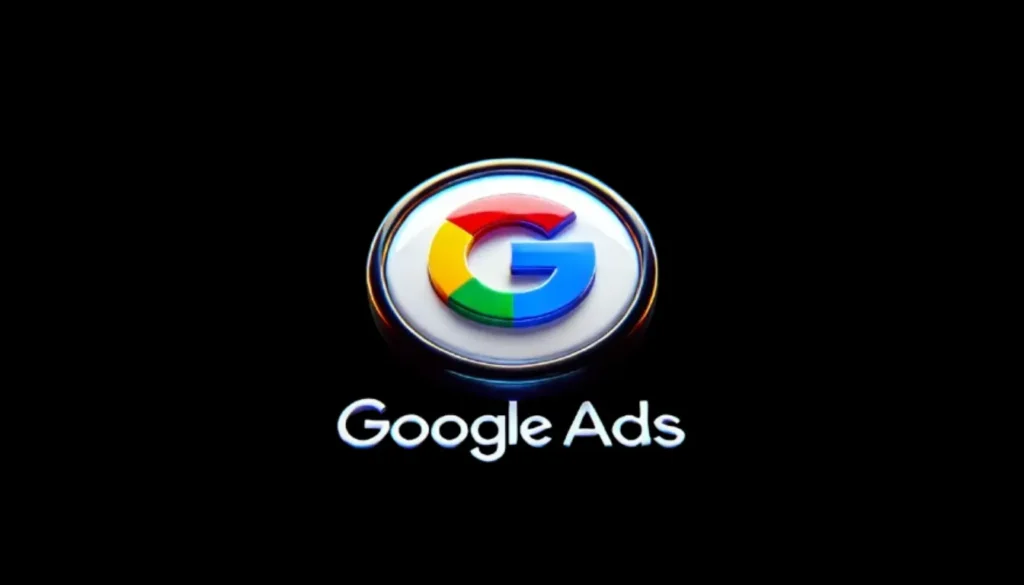Google Ads is undergoing a seismic transformation in 2025, driven by an unprecedented push toward automation and artificial intelligence (AI). As the digital advertising landscape evolves, Google’s latest ad algorithm updates are reshaping how campaigns are managed, optimized, and ranked. For marketers, staying updated is no longer optional—it’s critical to avoid penalties, maintain ad visibility, and improve performance. This detailed guide dives deep into Google’s recent changes, offering actionable insights to leverage automation and AI, sidestep pitfalls, and boost your ad ranking in this new era of PPC advertising.
In this article, we’ll explore:
- The core components of Google’s latest ad algorithm updates
- How automation and AI are redefining PPC strategies
- Steps to avoid penalties and ensure compliance
- Techniques to improve ad ranking and maximize ROI
- Future trends and best practices for 2025 and beyond
Whether you’re a small business owner or a seasoned PPC expert, this comprehensive, SEO-friendly resource will equip you with the knowledge to thrive amidst Google’s evolving ad ecosystem.
Table of Contents
- 1 Introduction: The AI Revolution in Google Ads
- 2 What’s New in Google’s Ad Algorithm?
- 3 The Shift Toward Automation: Opportunities and Challenges
- 4 AI Integration: The Heart of Google’s Updates
- 5 Avoiding Penalties in the New Algorithm
- 6 Improving Ad Ranking: Strategies for Success
- 7 Future Trends: What’s Next for Google Ads?
- 8 Best Practices for 2025
- 9 Conclusion
Introduction: The AI Revolution in Google Ads
Google Ads has long been a powerhouse in digital marketing, enabling businesses to reach targeted audiences with precision. However, as competition intensifies and consumer behavior shifts, Google is doubling down on AI and automation to streamline processes and enhance results. The latest ad algorithm updates—building on 2024’s foundation and accelerating into 2025—mark a pivotal shift toward smarter, more autonomous advertising systems.
Why does this matter? Automation reduces manual workload, while AI optimizes campaigns in real time, promising lower costs and higher conversions. Yet, with great power comes great responsibility. Missteps in adapting to these changes can lead to wasted budgets, reduced ad visibility, or even penalties tied to broader Google policies. This guide unpacks the updates, offering a roadmap to harness their potential while staying ahead of the curve.
What’s New in Google’s Ad Algorithm?
Google’s ad algorithm governs how ads are ranked, displayed, and charged in auctions. Recent updates emphasize three key areas: automation, AI integration, and ad rank recalibration. Let’s break them down.
1. Enhanced Automation in Campaign Management
Automation is no longer a supporting feature—it’s the backbone of Google Ads in 2025. Key developments include:
- Performance Max (PMax) Evolution: Introduced earlier, PMax now competes directly with Shopping campaigns based on ad rank, not priority settings (rolled out October 2024, per GoDataFeed). This shift uses AI to allocate budgets across Search, Display, YouTube, and more, maximizing conversions dynamically.
- Opportunities Section: Launched in March 2025 (noted on X), this AI-driven tool suggests budget adjustments, keyword expansions, and ad copy tweaks, reducing guesswork for advertisers.
- Automated Campaign Experiments: Custom experiments for PMax and Search campaigns (November 2024) allow AI to test new customer acquisition strategies automatically.
2. AI-Powered Optimization
AI is the engine driving these updates, with advancements like:
- Smart Bidding Refinements: Algorithms now adjust bids based on marginal CPA (cost per acquisition) and ROAS (return on ad spend), increasing CPCs when campaigns overperform to capture more conversions (Google Ads Help, 2025).
- Generative AI Tools: Ad copy generation and asset creation (e.g., video, multilingual ads) are now AI-assisted, tailoring content to user intent and cultural context (imarkinfotech.com, 2024).
- Predictive Analytics: AI forecasts campaign outcomes, recommending targeting and budget shifts based on historical data (Digital Trainee, 2024).
3. Ad Rank Overhaul
Ad rank—the formula determining ad placement—has shifted:
- PMax vs. Shopping Competition: Ad rank now decides auction winners between overlapping campaigns, potentially raising CPCs as campaigns “bid against themselves” (GoDataFeed, 2025).
- Quality Score Emphasis: AI enhances ad relevance scoring, rewarding high-quality, user-focused ads with better placement at lower costs.
These changes signal Google’s intent to make advertising more efficient—but also more complex. Automation and AI promise efficiency, but they demand strategic oversight to avoid pitfalls.
The Shift Toward Automation: Opportunities and Challenges
Automation is transforming PPC from a hands-on craft to a data-driven science. Here’s how it’s reshaping the landscape.
Opportunities of Automation
- Time Savings: Tasks like bid adjustments and keyword research are now instant, freeing marketers for strategy and creativity.
- Scalability: AI manages large campaigns effortlessly, optimizing thousands of keywords and placements in real time.
- Precision: Algorithms analyze user signals (e.g., device, location, intent) to target high-value audiences with pinpoint accuracy.
Challenges of Automation
- Loss of Control: Over-reliance on AI can misalign campaigns with unique business goals—Google’s “best practices” aren’t always yours (Claire Jarrett, 2024).
- Cost Creep: Competing PMax and Shopping campaigns can inflate CPCs without careful monitoring.
- Learning Curve: Adapting to new tools like the Opportunities section requires experimentation and trust in AI outputs.
Real-World Example
A retailer using PMax saw a 19% higher ROAS compared to social platforms in 2023 (Google Ads Blog, 2024). However, after the 2024 ad rank update, their CPCs rose 12% due to campaign overlap—highlighting the need for strategic adjustments.
AI Integration: The Heart of Google’s Updates
AI isn’t just automating tasks—it’s redefining how ads are created, targeted, and optimized.
Key AI Features
- Smart Bidding Enhancements
- Adjusts bids based on real-time conversion likelihood, balancing CPA and ROAS goals.
- Example: If a campaign hits 1200% ROAS vs. a 1000% target, AI raises bids to maximize revenue.
- Generative Ad Creation
- Produces headlines, descriptions, and even video assets using natural language processing (NLP).
- Supports multilingual ads with cultural nuance (imarkinfotech.com, 2024).
- Audience Insights
- Predictive analytics segments users by behavior, intent, and lifetime value, refining targeting.
Benefits of AI Integration
- Personalization: Ads match user intent more closely, boosting click-through rates (CTR).
- Efficiency: AI tests and optimizes assets faster than manual A/B testing.
- Adaptability: Responds to market shifts instantly, keeping campaigns relevant.
Case Study
A travel agency adopted AI-generated ad copy in 2024, increasing CTR by 15% and conversions by 10% within two months, thanks to tailored messaging (Digital Trainee, 2024).
Avoiding Penalties in the New Algorithm
While Google Ads itself doesn’t impose “penalties” like organic search, missteps can indirectly harm performance through policy violations or poor ad ranking. Here’s how to stay compliant.
Common Pitfalls
- Site Reputation Abuse: Manual actions from Google’s 2024 policy (still active in 2025) penalize sites hosting manipulative third-party content, impacting organic visibility and ad performance (Search Engine Land, 2024).
- Campaign Overlap: Unmanaged PMax and Shopping campaigns inflate costs and dilute results.
- Low-Quality Assets: Irrelevant or spammy ads lower Quality Scores, raising CPCs and reducing visibility.
How to Avoid Issues
- Monitor Policies: Regularly check Google Ads policies for updates (e.g., conversion tracking requirements by April 30, 2025—Google Ads Help).
- Use Exclusions: Add negative keywords and placement exclusions to PMax to prevent wasted spend (Fraudblocker, 2024).
- Optimize Feeds: Ensure product data (titles, images) meets Google’s standards to boost ad rank (GoDataFeed, 2025).
Improving Ad Ranking: Strategies for Success
Ad rank determines your ad’s position and cost. With AI and automation in play, here’s how to optimize it.
1. Enhance Ad Quality
- Relevance: Align ad copy with landing pages and user intent.
- CTR Focus: Use compelling headlines and extensions (e.g., sitelinks, callouts).
- Asset Variety: Provide multiple headlines, descriptions, and visuals for AI to test.
2. Leverage Smart Bidding
- Set clear CPA or ROAS targets to guide AI adjustments.
- Monitor marginal performance to avoid overbidding.
3. Optimize Data Feeds
- For Shopping and PMax, use high-quality images (1024px+) and detailed titles (Claire Jarrett, 2024).
- Avoid overlap by segmenting products across campaigns.
4. Test and Iterate
- Use the Opportunities section to experiment with AI suggestions.
- Run custom experiments to refine targeting and creative.
Example
A fashion brand optimized its Shopping feed and adopted Smart Bidding, cutting CPC by 20% and lifting ad rank by 30% in Q1 2025.
Future Trends: What’s Next for Google Ads?
Google’s AI push is just beginning. Here’s what to expect:
- Multimodal Search: Ads will integrate with voice, visual, and text queries (Search Engine Land, January 2025).
- Shopping in AI Overviews: Ads within AI-generated search summaries (Fraudblocker, 2024).
- Privacy-First Automation: Enhanced data management tools to comply with regulations (imarkinfotech.com, 2024).
Best Practices for 2025
- Stay Informed: Follow Google Ads Help and industry blogs for updates.
- Balance Automation: Use AI as a tool, not a replacement for strategy.
- Monitor Metrics: Track CPC, ROAS, and ad rank weekly.
- Invest in Quality: Prioritize high-quality assets and landing pages.
Conclusion
Google’s latest ad algorithm updates herald a new era of automation and AI in PPC. By embracing these changes—optimizing for Smart Bidding, leveraging generative tools, and avoiding pitfalls—you can lower costs, improve ad ranking, and drive conversions. Stay proactive, experiment wisely, and let AI amplify your success in 2025 and beyond.

